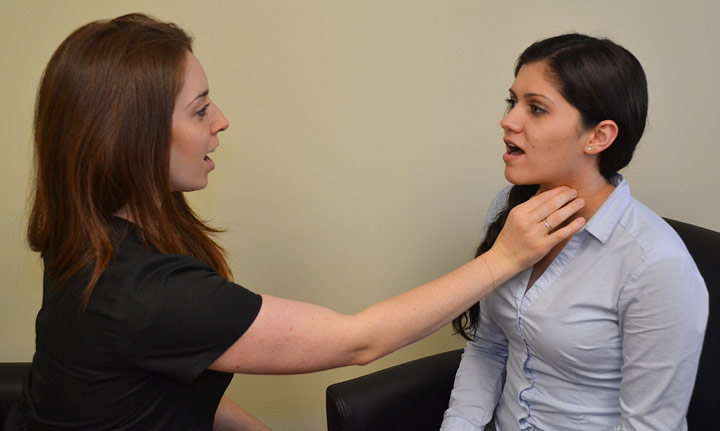Voice Disorders
You have probably had problems with your voice at some time. Maybe you had a cold and “lost” your voice. Maybe you cheered too much for your favorite team and had a hoarse voice for a few days after. Some voice problems last for a short time while others may last longer.
Voice disorders can be classified by the cause or symptoms a person may experience, which are either functional or organic. Functional voice disorders, may occur from physical changes and do not have a known cause. Organic voice disorders have a physical cause, such as vocal fold paralysis. There are various things to consider when assessing a voice disorder, including a person’s
• Pitch: is the voice too low, normal or too high?
• Loudness—is the voice too soft, normal or too loud?
• Quality—is the voice breathy, normal or tight/harsh
• Breathing—does a person have too few words per breath, adequate or too many words per breath?
• Vocal habits—alcohol consumption, smoking, caffeine use, environment, teaching, yelling/screaming, loud talking, and excessive singing to name a few.
• Medical history
A screening and thorough voice assessment is conducted when first considering a possible voice disorder. A referral to an ear, nose and throat specialist prior to treatment may be required if a person has not previously been seen by one. The purpose of having a medical evaluation by an ear, nose and throat specialist is to fully examine a person’s vocal structures, determine the cause of the voice problem. Some causes may be life threatening, in which a diagnosis is absolutely imperative.
A voice therapy program, or treatment, will not begin prior to completion of a medical evaluation. Treatment is determined by the cause and diagnosis, and will vary from one person to another.

McAfee, Julie G., Shipley, Kenneth G. Assessment in Speech-Language Pathology. Delmar, Cengage Learning. 2009.
www.asha.org/public/speech/disorders/voice/

